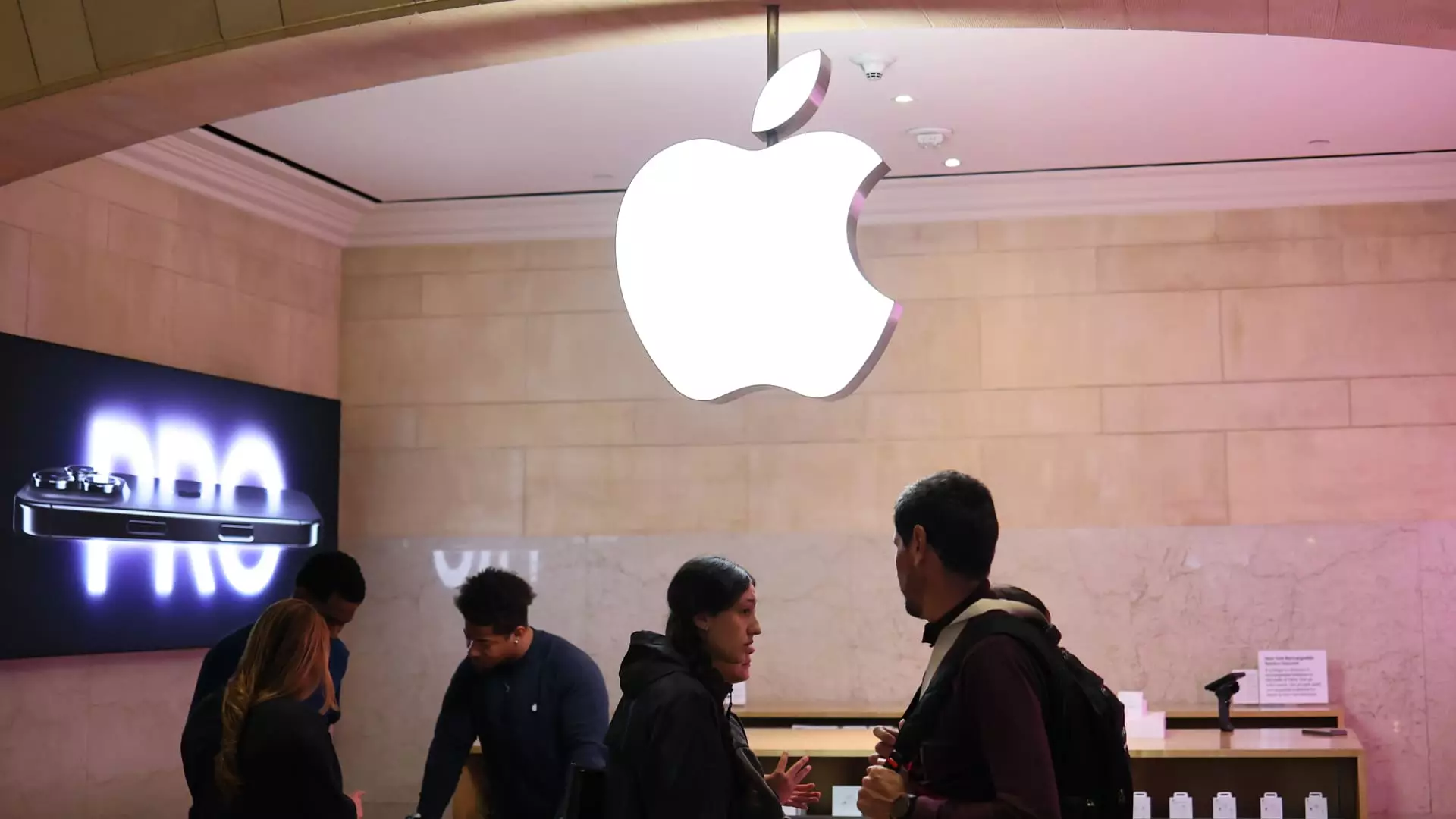The business landscape has become increasingly treacherous for major corporations, and none stands out more than Apple in the context of President Donald Trump’s higher tariff regime. According to Dan Ives, a seasoned analyst from Wedbush Securities, the repercussions of these tariffs could cascade through Apple’s financial structure, delivering a blow that may not be easily recoverable. With a price target cut from $325 to $250, the implications are significant—despite Ives maintaining an “outperform” investment rating on the tech giant. This analysis underscores a stark reality: Apple is particularly vulnerable due to its heavy reliance on China for manufacturing, and this dependence now poses a significant risk.
The Near-Total China Dependency
Consider the staggering fact that roughly 90% of iPhones are manufactured and assembled in China. This statistic highlights a critical weakness. Ives asserts that no U.S. tech company is more at risk from these tariffs, and it’s easy to see why. The trade tensions have already produced tangible outcomes—Apple shares plummeted by 18% in April alone as Trump announced a 10% tariff baseline and imposed punitive tariffs specifically targeting Chinese imports. Apple’s current standing—one that puts it 30% below its 52-week high—demonstrates just how devastating these moves have been for shareholder confidence.
Production Costs: A Dangerous Shift
The broader implications of tariffs on Apple’s cost structure can hardly be overstated. Ives warns that if the price of the average iPhone rises due to tariffs—a reality he deems inevitable—then Apple’s reputation as a producer of premium, consumer-friendly products may suffer irreparably. Imagine a $1,000 iPhone suddenly becoming a platform for inflated prices; this is not merely hypothetical but a looming crisis. Apple’s longstanding association with quality could erode, and so could consumer loyalty, leading to amplifying demand destruction.
Investments in Domestic Manufacturing: A Double-Edged Sword
Apple has publicly acknowledged the need to diversify its supply chain, committing to invest over $500 billion domestically over the next four years. However, Ives estimates that even shifting just 10% of manufacturing from Asia to the U.S. would require a staggering $30 billion and could take several years to achieve. This projected timeline poses a paradox: while domestic investment sounds promising politically, immediate relief from tariffs seems a distant prospect. The status quo endures, and the threat to Apple’s market position thus continues unabated.
The Immediate Fallout: Uncertainty Reigns
Ives emphasizes a lack of clarity surrounding future tariffs, predicting that this uncertainty will deter most tech companies—including Apple—from offering forward-looking financial guidance in the near term. The absence of clarity creates an unstable environment for tech stocks, possibly leading to irrational consumer behavior based on paranoia rather than rational market dynamics. The volatility could produce an unstable selling environment, further threatening Apple’s volumes and margins.
The Risk of an Unbalanced Supply Chain
The cascading effects of rising tariffs represent a profound structural shift in Apple’s operational capabilities. Ives articulately describes how these changes could turn the supply chain “upside down.” The complexities of modern global supply chains make it increasingly difficult to pivot quickly without incurring significant costs and risks. Apple’s established efficiencies could be jeopardized, causing unforeseen pitfalls in production and pricing.
The Broader Economic Impact: A Decade Set Back?
In his analysis, Ives goes as far as to suggest that Trump’s tariff strategies could potentially set the entire U.S. tech industry back a decade. Given that technological advancements have historically surged forward with relative momentum, any significant drag on the industry could cause a ripple effect that is severely damaging not just to Apple, but to tech innovators of all sizes. The barriers to growth created by tariffs present a complex dilemma that is emotionally charged, financially troubling, and strategically vexing.
Wall Street’s Mixed Signal: Bullish Yet Cautious
Despite these foreboding forecasts, a significant number of analysts remain bullish on Apple, with approximately 32 out of 47 rating it as a buy or strong buy. Such optimism stands against the backdrop of declining share prices and a foreboding economic environment. This disconnect between analyst sentiment and market reality begs the question: Are investors becoming too enamored with brand loyalty at the expense of rational market actions? Without addressing the fundamental issues at play, including high tariff structures, Apple must tread carefully to maintain its reputation and bottom line.

